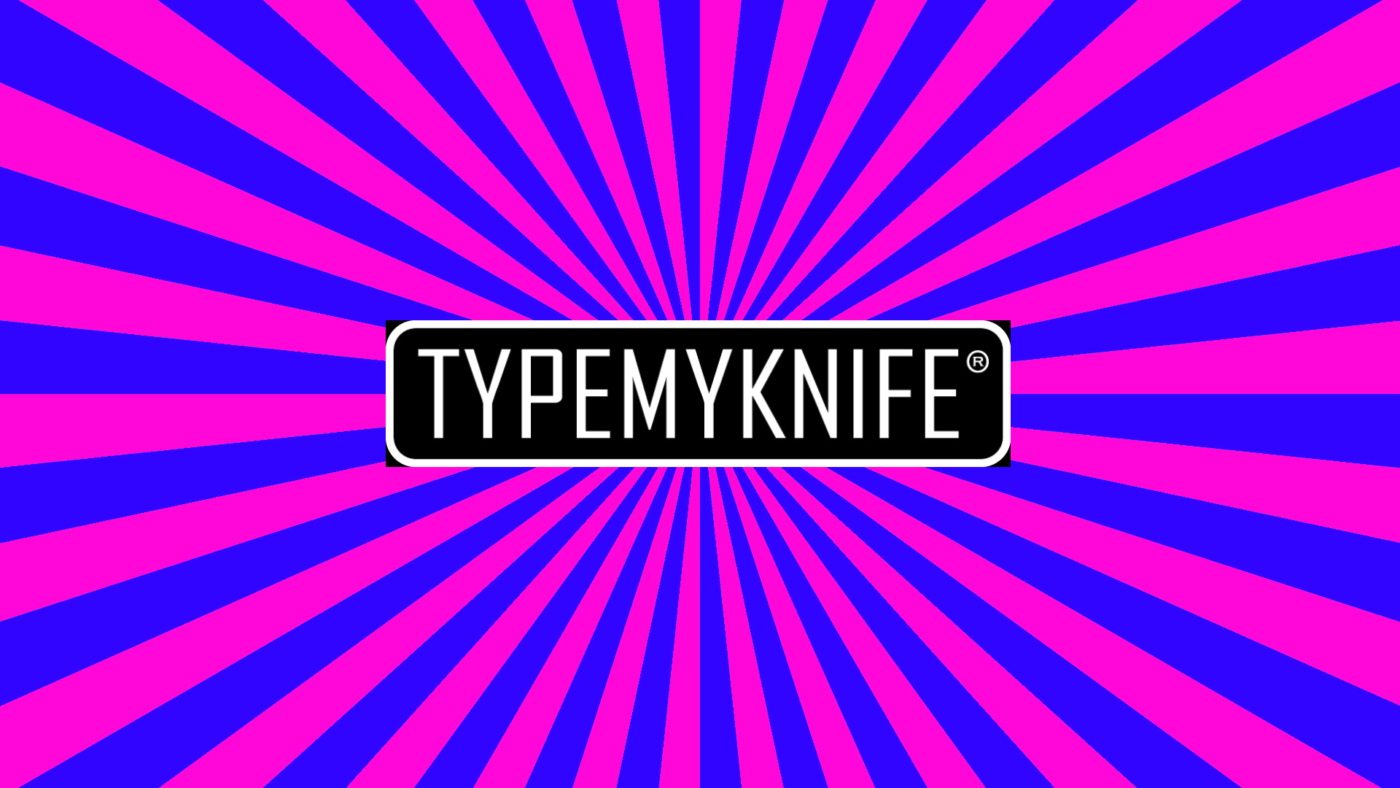The term laser engraving is actually to be defined technically. In everyday language, however, laser engraving includes the removal of material, layer removal and annealing.
This is what TYPEMYKNIFE deals with when refining and designing chef’s knives.
The use of engraving lasers to date.
Engraving
Formerly
The term engraving actually means cutting writing or ornaments into a mostly metallic surface. The engraver uses a sharp steel, the burin, and cuts a fine chip out of the metal. The glass engraver, on the other hand, grinds the motif into the surface with a diamond-tipped cutter.
Today
Engraving machines are mostly copy routers. A raised or recessed template, ornament or writing is traced by a feeler and transferred to the milling machine. A milling head traces the template true to the original, but in a different scale on the workpiece.
Three methods are still used today to visualize a company logo or serial numbers on workpieces such as kitchen knives.
Stamp
The logo of a company is pressed into the metal object under high pressure using a die or stamp. With knives, the stamp has to be much harder than the knife steel. The stamping is therefore usually carried out before the hardening of the chef’s knife blades. The stamp stands out deep in the steel.
Engrave.
With a CNC milling machine, any typeface can be machined automatically and in series in metal.
This has two advantages, the font or the logo can be changed on the computer at any time, so serial numbers can be milled continuously.
The diamond burr can write on any knife blade, even highly hardened steel.
Etch
Most knife manufacturers still label their kitchen knives using the so-called etching process. The manufacturer’s logo is on a screen-printed fabric. This is permeable where the lettering is to be etched. Electrolyte fluid is applied to the knife through the template using a tampon. A weak current starts the etching process. A dark gray surface change occurs. The logo becomes visible.
laser engraving
The term is technically difficult to narrow down. In general usage, laser engraving or laser engraving includes the removal of material, layer removal, annealing or laser marking.
Industrial laser engraving
Laser labeling is the black marking of mostly metallic objects with a controlled, intense laser beam. The lettering produced is jet black, abrasion-resistant and waterproof. It is resistant to oils, solvents, weak acids and alkalis. This makes the laser engraving very permanent. An ideal area of application is therefore the labeling of serially manufactured machine parts.
Serial laser engraving
The writing or the image is digital. Controlled by the computer, the serial number, designation, QR or bar code can be automatically adjusted for each additional item in a series. In the medical field, serial numbers and codes can be lasered so small on screws, prostheses, or surgical instruments that they are only visible under magnification.
Hygiene
Another advantage of laser engraving is that it does not leave a deeper pit or cuts in the material. Laser engraving thus fulfills the hygiene regulations that apply in the kitchen, but also meets the infectious safety requirements in the medical sector.
Because laser marking is so permanent, operating a machine part in oil and heat will not erase the marking. Medical devices, forceps, clamps, tweezers go into the autoclave after each use. There it is sterilized by means of heat and pressure. The laser inscription also survives this without damage.
The procedure
Laser engraving or initial lettering
is based on the change in the metal surface due to heat input from the laser. The principle is well known when heating metal, metal oxides with different color effects are formed. Chrome-plated exhausts, for example, turn significantly blue with heat.
The laser also produces such coloring. The color change occurs when the surface melts in air and is usually brown to black. The high heat that liquefies the metal on the surface generates a local evaporation. At the same time, carbonization or oxidation occurs.
TYPEMYKNIFE Engraves in deep black using a fiber laser. A scanning unit is used to guide the laser beam precisely over the kitchen knives. There are two galvanometers in this laser head. These are small, electrically controlled coils on which precision mirrors sit. The mirrors can write lines across the knife extremely quickly. Lines and dots are created by switching the laser beam on and off. Placed close together, these create text and images.
For industry, it is important to be able to produce mostly small, serial inscriptions very quickly. That’s why it was initially impossible for TYPEMYKNIFE to find a suitable product and a manufacturer for the laser that met our requirements. We engrave knives with a blade length of more than 30 cm. We create a sharp, deep black, permanent image over the entire surface. Achieving this has presented most laser companies with insurmountable problems. Over two years we have developed a completely new laser technology with the only company that was willing to face the adventure. It required special optics and adjusted laser parameters.
We developed a proprietary technique to position the front-to-back, edge-to-back tapered kitchen knife blade with the top side always parallel to the laser head. This guarantees the best inscription quality.
Last not least, we have developed the worldwide unique 3D engraving configurator for kitchen knife blades. This configurator gives you all the options to freely design your chef’s knife blade.
Design your chef’s knife with your personal style in the TYPEMYKNIFE 3D engraving configurator.
Share your draft directly with a screenshot to your friends and let them share your creativity.
Gravur Laser, die Entwicklung von gebündeltem Licht Teil 1
Gravur Laser und das gebündelte Licht Teil 2
https://typemyknife.com/the-3d-engraving-configurator/
3D Laser Gravur für Messer by TYPEMYKNIFE®

